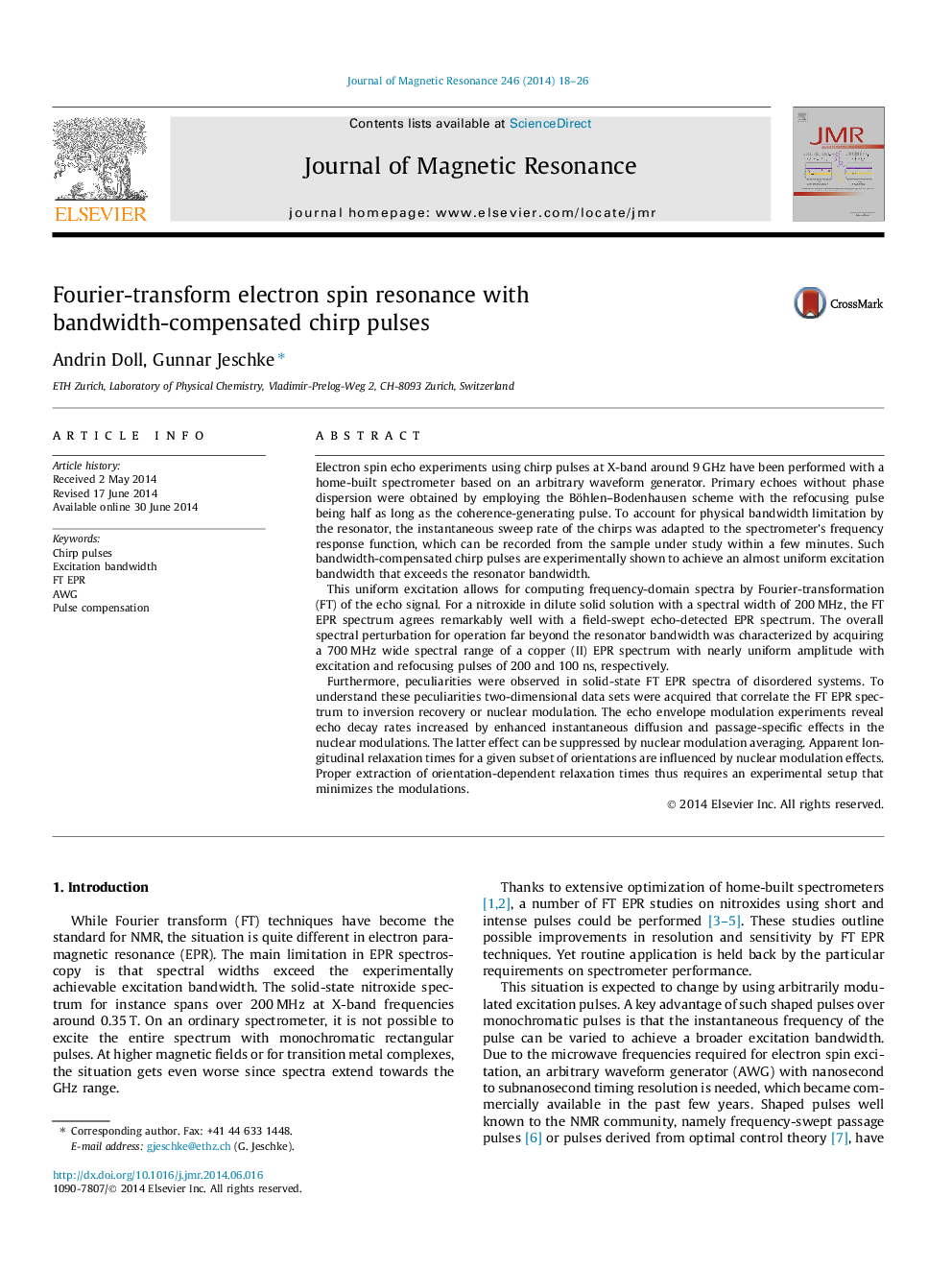| Article ID | Journal | Published Year | Pages | File Type |
|---|---|---|---|---|
| 5405261 | Journal of Magnetic Resonance | 2014 | 9 Pages |
â¢Coherent chirp pulses on home-built high-power AWG spectrometer.â¢Uniform excitation with chirps compensated for bandwidth limitations.â¢Frequency-domain EPR spectra by Fourier transform of refocused chirp echoes.â¢Quantification of hardware perturbations in chirp echo spectra.
Electron spin echo experiments using chirp pulses at X-band around 9Â GHz have been performed with a home-built spectrometer based on an arbitrary waveform generator. Primary echoes without phase dispersion were obtained by employing the Böhlen-Bodenhausen scheme with the refocusing pulse being half as long as the coherence-generating pulse. To account for physical bandwidth limitation by the resonator, the instantaneous sweep rate of the chirps was adapted to the spectrometer's frequency response function, which can be recorded from the sample under study within a few minutes. Such bandwidth-compensated chirp pulses are experimentally shown to achieve an almost uniform excitation bandwidth that exceeds the resonator bandwidth.This uniform excitation allows for computing frequency-domain spectra by Fourier-transformation (FT) of the echo signal. For a nitroxide in dilute solid solution with a spectral width of 200Â MHz, the FT EPR spectrum agrees remarkably well with a field-swept echo-detected EPR spectrum. The overall spectral perturbation for operation far beyond the resonator bandwidth was characterized by acquiring a 700Â MHz wide spectral range of a copper (II) EPR spectrum with nearly uniform amplitude with excitation and refocusing pulses of 200 and 100Â ns, respectively.Furthermore, peculiarities were observed in solid-state FT EPR spectra of disordered systems. To understand these peculiarities two-dimensional data sets were acquired that correlate the FT EPR spectrum to inversion recovery or nuclear modulation. The echo envelope modulation experiments reveal echo decay rates increased by enhanced instantaneous diffusion and passage-specific effects in the nuclear modulations. The latter effect can be suppressed by nuclear modulation averaging. Apparent longitudinal relaxation times for a given subset of orientations are influenced by nuclear modulation effects. Proper extraction of orientation-dependent relaxation times thus requires an experimental setup that minimizes the modulations.
Graphical abstractDownload high-res image (98KB)Download full-size image
